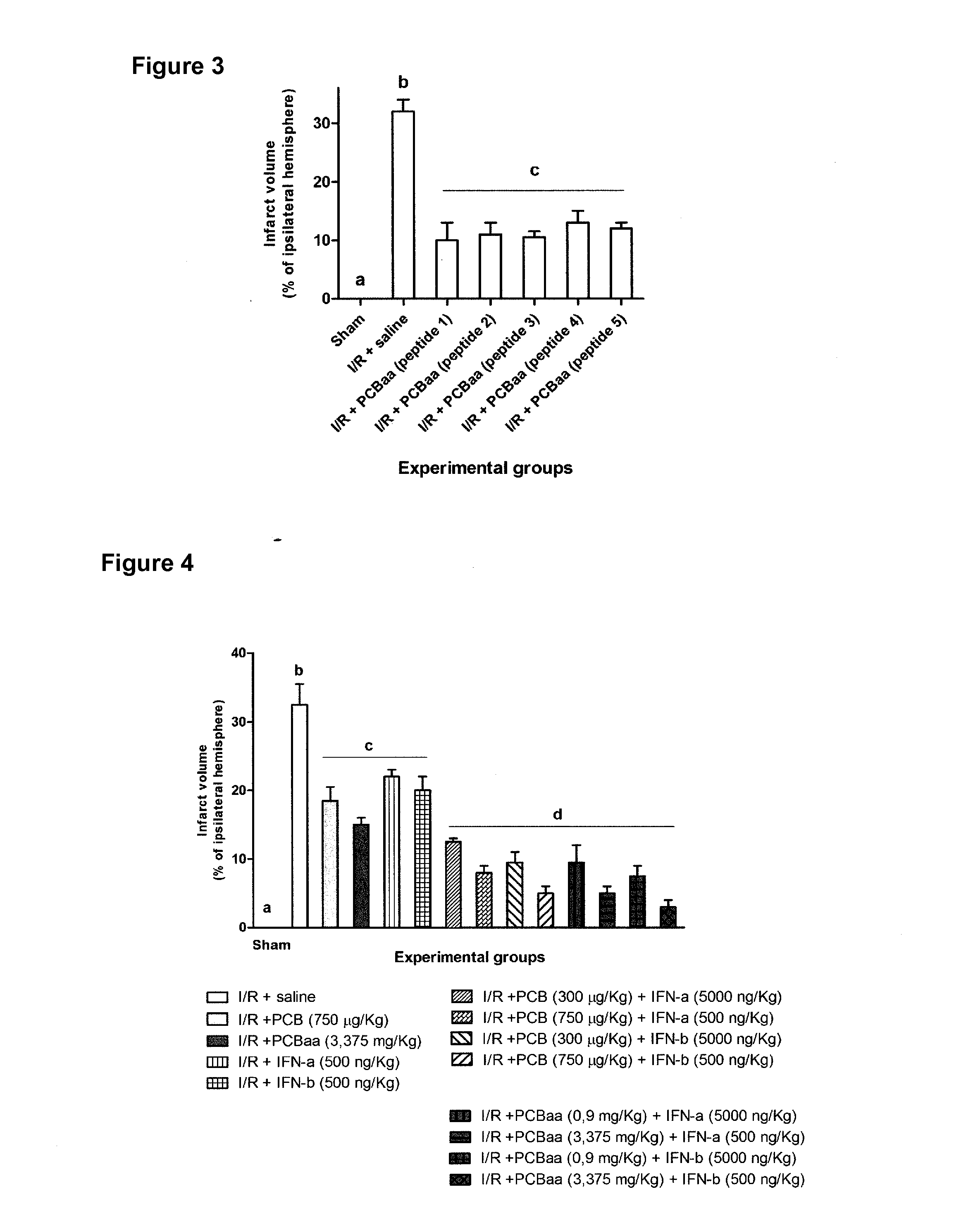Compounds and pharmaceutical combinations for the treatment of neurodegenerative and ischemic brain diseases
a brain disease and neurodegenerative technology, applied in the field of compound and pharmaceutical combination for the treatment of neurodegenerative and ischemic brain diseases, can solve the problems of provoking neuron hyper-excitation, increasing the risk of schizophrenia, and causing cell damage and/or death
- Summary
- Abstract
- Description
- Claims
- Application Information
AI Technical Summary
Benefits of technology
Problems solved by technology
Method used
Image
Examples
example 1
Mass Spectrometry of Phycocyanobilin (PCB) Obtained by Metanolic Treatment and of the Chromogenic Peptides (PCB-aa)
[0074]FIG. 1A shows the m / z signal 587,26 corresponding to the chromophore PCB, obtained by differential ultrafiltration of the C-Phyco metanolic extract. FIG. 1B, C y D show the mass spectrometry pattern of PCB-aa obtained by trypsin digestion of C-Phyco.
example 2
Neuroprotector Effect of C-Phyco, PCB and PCB-aa Against the Sodium Glutamate Induced Damage in the PC12 Cell Line
[0075]PC12 cells (1.5×104 cells / well) were pretreated with C-Phyco (25, 50 μM) or PCB (0.5; 1; 5 μM) or PCB-aa (0.25; 1; 2 μM), during 24 h, and then submitted to co-incubation with 50 μM Sodium glutamate together with the corresponding product (different doses) for 4 h. The cell viability was measured by the (3-(4,5-Dimetiltiazol-2-il)-2,5-difeniltetrazolium bromide method (MTT) and the percentage with respect to the control was reported, as shown in FIG. 2. It can be observed that to attain similar cell viability to that of C-Phyco lower concentrations of PCB and PCB-aa were needed. The PCB-aa (peptide 1) concentrations that achieved a similar effect to PCB and C-Phyco were even lower in respect to the said compounds.
example 3
Demonstration of Neuroprotector and / or Neuroregenerator Properties of PCB-aa Peptides, by Means of the Infarct Volume Reduction, in the Mongolian Gerbil I / R Model
[0076]The animals were treated with saline solution or with an accumulative dose of the PCB-aa peptides (3,375 mg / kg of each one), by intraperitoneal route for 30 min, 3, 6 and 12 h after the ischemic event.
[0077]The effectiveness percentage of each treatment was calculated according to the following formula: effectiveness %=(1−Vi / VI / R)×100. Vi: infarct volume of the ischemic group treated with the corresponding product; VI / R: volume of the infarct of the ischemic group treated with saline solution.
[0078]As may be observed in FIG. 3, the animals treated with the chromogenic peptides (PCB-aa) consisting in the SEQ ID NO: 1 to the SEQ ID NO: 5, showed a significant reduction of the infarct volume with respect to the ischemic group treated with saline solution.
PUM
| Property | Measurement | Unit |
|---|---|---|
| Weight | aaaaa | aaaaa |
| Weight | aaaaa | aaaaa |
Abstract
Description
Claims
Application Information
 Login to View More
Login to View More - R&D
- Intellectual Property
- Life Sciences
- Materials
- Tech Scout
- Unparalleled Data Quality
- Higher Quality Content
- 60% Fewer Hallucinations
Browse by: Latest US Patents, China's latest patents, Technical Efficacy Thesaurus, Application Domain, Technology Topic, Popular Technical Reports.
© 2025 PatSnap. All rights reserved.Legal|Privacy policy|Modern Slavery Act Transparency Statement|Sitemap|About US| Contact US: help@patsnap.com



